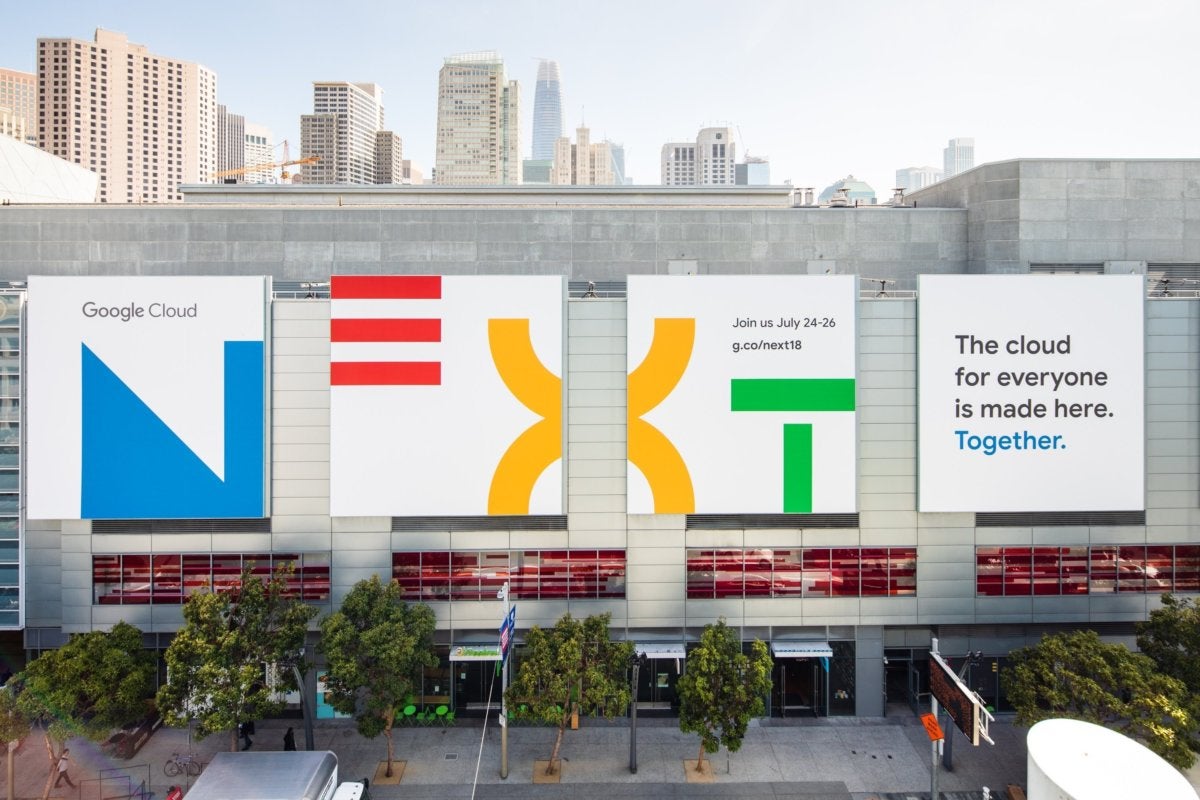Dell Latitude E6410 Notebook| Quantity Available: 40+
This post is intended for businesses and other organizations interested... Read more →
Posted by Richy George on 16 April, 2024

Open-source database provider Qdrant has made available Qdrant Hybrid Cloud, a dedicated vector database to be offered in a managed hybrid cloud model.
Qdrant, the open-source foundation of both Qdrant Cloud and Qdrant Hybrid Cloud, is a vector similarity search engine and vector database written in Rust. Qdrant offers a set of features for performance optimization and can handle billions of vectors with scale and memory safety, the company said.
Qdrant said it lets businesses deploy vector databases across any cloud provider, on-prem data center, or edge location, thus ensuring performance, security, and cost efficiency for AI-driven applications. Vector databases have emerged as a critical component for building generative AI applications.
Qdrant Hybrid Cloud lets customers deploy a vector database in their chosen environment without sacrificing the benefits of a managed cloud service. In addition to running on Google Cloud Platform and Microsoft Azure, Qdrant Hybrid Cloud can run in Oracle Cloud Infrastructure, Red Hat OpenShift, Vultur, DigitalOcean, OVHcloud, Scaleway, Stackit, Civo, or any other private or public infrastructure with Kubernetes support.
Next read this:
Posted by Richy George on 9 April, 2024

Google Cloud is adding capabilities driven by its proprietary large language model, Gemini to its database offerings, which include Bigtable, Spanner, Memorystore for Redis, Firestore, CloudSQL for MySQL, and AlloyDB for PostgreSQL, the company announced at its annual Next conference.
The Gemini-driven capabilities, which are currently in public preview, include SQL generation, and AI assistance in managing and migrating databases.
Last year, the company added Duet AI, now rebranded to Gemini, in Spanner and its Database Migration Service.
The SQL generation capability can be accessed via the company’s SQL editor named Database Studio to be found inside Google’s Cloud Console.
As the name suggests, this capability allows developers to easily generate, summarize, and fix SQL code with intelligent code assistance, code completion, and guidance directly inside Database Studio, which in turn improves productivity, the company said, adding that Database Studio supports both MySQL and PostgreSQL dialects.
In addition, Database Studio comes with a context-aware chat interface that can take input in natural language to help build database applications faster, according to the company.
Google is not the only database provider that has added SQL code generation to its list of capabilities, analysts said.
“SQL code generation with assistance from generative AI has become one of the low-hanging fruits for generative AI over the past year,” said Tony Baer, principal analyst at dbInsight.
“The new breed of generative AI database code assistants should eventually have a key advantage over those assistants that cater to general-purpose languages, which is that they are database-specific and can therefore read the metadata of databases to not just form, but also optimize SQL code,” Baer explained.
In order to help manage databases better, the cloud service provider is adding a new feature called the Database Center, which will allow operators to manage an entire fleet of databases from a single pane.
Database Center also provides intelligent dashboards to proactively assess availability, data protection, security, and compliance posture, the company said.
Further, the company is infusing Gemini into the Database Center via a natural language-based chat window that will allow enterprise teams to interact with the databases and find more insights about them.
The chat window also can be used to generate troubleshooting tips for database-related issues, the company said.
Google’s idea to have a single pane to manage multiple databases takes inspiration from Oracle, according to Baer.
While Oracle provides the capability for multiple instances of the same databases, which is multimodal, Google extends the capability to a heterogenous collection of databases, Baer said.
“Having central control means that enterprises can be consistent with their policies for security, data access, and service level agreements (SLAs). That’s a major step toward the simplification that we expect from the cloud,” the principal analyst explained.
Google has also extended Gemini to its Database Migration Service, which earlier had support for Duet AI.
Gemini’s improved features will make the service better, the company said, adding that Gemini can help convert database-resident code, such as stored procedures, functions to PostgreSQL dialect.
Additionally, Gemini-powered database migration also focuses on explaining the translation of the code with a side-by-side comparison of dialects, along with detailed explanations of the code and recommendations.
The focus on explaining the code has been planned to help upskill and retrain SQL developers, the company said.
In addition to powering databases with Gemini, Google has added new features to AlloyDB AI.
AlloyDB AI, which was introduced last year as part of its AlloyDB for PostgreSQL database service, is a suite of integrated capabilities targeted at helping developers build generative AI-based applications using real-time data.
The new features include allowing generative AI-based applications to query data with natural language and a new type of database view.
The enablement of querying data with natural language will allow AI-based applications to respond to more sets of questions from enterprise teams, the company said.
On the other hand, the new type of database view — parameterized secure view — allows enterprise teams to secure data based on the end-users’ context.
AlloyDB AI can be downloaded using AlloyDB Omni, which has been made generally available. AlloyDB Omni is a downloadable version of Google Cloud’s PostgreSQL-compatible database service.
Other updates include the addition of Bigtable Data Boost, similar to Spanner Data Boost released last year, and performance enhancements to Memorystore for Redis.
Next read this:
Posted by Richy George on 4 April, 2024

Once you get past the chatbot hype, it’s clear that generative AI is a useful tool, providing a way of navigating applications and services using natural language. By tying our large language models (LLMs) to specific data sources, we can avoid the risks that come with using nothing but training data.
While it is possible to fine-tune an LLM on specific data, that can be expensive and time-consuming, and it can also lock you into a specific time frame. If you want accurate, timely responses, you need to use retrieval-augmented generation (RAG) to work with your data.
The neural networks that power LLMs are, at heart, sophisticated vector search engines that extrapolate the paths of semantic vectors in an n-dimensional space, where the higher the dimensionality, the more complex the model. So, if you’re going to use RAG, you need to have a vector representation of your data that can both build prompts and seed the vectors used to generate output from an LLM. That’s why it’s one of the techniques that powers Microsoft’s various Copilots.
I’ve talked about these approaches before, looking at Azure AI Studio’s Prompt Flow, Microsoft’s intelligent agent framework Semantic Kernel, the Power Platform’s Open AI-powered boost in its re-engineered Q and A Maker Copilot Studio, and more. In all those approaches, there’s one key tool you need to bring to your applications: a vector database. This allows you to use the embedding tools used by an LLM to generate text vectors for your content, speeding up search and providing the necessary seeds to drive a RAG workflow. At the same time, RAG and similar approaches ensure that your enterprise data stays in your servers and isn’t exposed to the wider world beyond queries that are protected using role-based access controls.
While Microsoft has been adding vector search and vector index capabilities to its own databases, as well as supporting third-party vector stores in Azure, one key database technology has been missing from the RAG story. These missing databases are graph databases, a NoSQL approach that provides an easy route to a vector representation of your data with the added bonus of encoding relationships in the vertices that link the graph nodes that store your data.
Graph databases like this shouldn’t be confused with the Microsoft Graph. It uses a node model for queries, but it doesn’t use it to infer relationships between nodes. Graph databases are a more complex tool, and although they can be queried using GraphQL, they have a much more complex query process, using tools such as the Gremlin query engine.
One of the best-known graph databases is Neo4j, which recently announced support for the enterprise version of its cloud-hosted service, Aura, on Azure. Available in the Azure Marketplace, it’s a SaaS version of the familiar on-premises tool, allowing you to get started with data without having to spend time configuring your install. Two versions are available, with different memory options built on reserved capacity so you don’t need to worry about instances not being available when you need them. It’s not cheap, but it does simplify working with large amounts of data, saving a lot of time when working with large-scale data lakes in Fabric.
One key feature of Neo4J is the concept of the knowledge graph, linking unstructured information in nodes into a structured graph. This way you can quickly see relationships between, say, a product manual and the whole bill of materials that goes into the product. Instead of pointing out a single part that needs to be replaced for a fix, you have a complete dependency graph that shows what it affects and what’s necessary to make the fix.
A tool like Neo4j that can sit on top of a large-scale data lake like Microsoft’s Fabric gives you another useful way to build out the information sources for a RAG application. Here, you can use the graph visualization tool that comes as part of Neo4j to explore the complexities of your lakehouses, generating the underlying links between your data and giving you a more flexible and understandable view of your data.
One important aspect of a knowledge graph is that you don’t need to use it all. You can use the graph relationships to quickly filter out information you don’t need for your application. This reduces complexity and speeds up searches. By ensuring that the resulting vectors and prompts are confined to a strict set of relationships, it reduces the risks of erroneous outputs from your LLM.
There’s even the prospect of using LLMs to help generate those knowledge graphs. The summarization tools identify specific entities within the graph database and then provide the links needed to define relationships. This approach lets you quickly extend existing data models into graphs, making them more useful as part of an AI-powered application. At the same time, you can use the Azure Open AI APIs to add a set of embeddings to your data in order to use vector search to explore your data as part of an agent-style workflow using LangChain or Semantic Kernel.
The real benefit of using a graph database with a large language model comes with a variation on the familiar RAG approach, GraphRAG. Developed by Microsoft Research, GraphRAG uses knowledge graphs to improve grounding in private data, going beyond the capabilities of a standard RAG approach to use the knowledge graph to link related pieces of information and generate complex answers.
One point to understand when working with large amounts of private data using an LLM is the size of the context window. In practice, it’s too computationally expensive to use the number of tokens needed to deliver a lot of data as part of a prompt. You need a RAG approach to get around this limitation, and GraphRAG goes further, letting you deliver a lot more context around your query.
The original GraphRAG research uses a database of news stories, which a traditional RAG fails to parse effectively. However, with a knowledge graph, entities and relationships are relatively simple to extract from the sources, allowing the application to select and summarize news stories that contain the search terms, by providing the LLM with much more context. This is because the graph database structure naturally clusters similar semantic entities, while providing deeper context in the relationships encoded in the vertices between those nodes.
Instead of searching for like terms, much like a traditional search engine, GraphRAG allows you to extract information from the entire dataset you’re using, whether transcripts of support calls or all the documents associated with a specific project.
Although the initial research uses automation to build and cluster the knowledge graph, there is the opportunity to use Neo4j to work with massive data lakes in the Microsoft Fabric, providing a way to visualize that data so that data scientists and business analysts can create their own clusters, which can help produce GraphRAG applications that are driven by what matters to your business as much as by the underlying patterns in the data.
Having a graph database like Neo4j in the Azure Marketplace gives you a tool that helps you understand and visualize the relationships in your data in a way that supports both humans and machines. Integrating it with Fabric should help build large-scale, context-aware, LLM-powered applications, letting you get grounded results from your data in a way that standard RAG approaches can miss. It’ll be interesting to see if Microsoft starts implementing GraphRAG in its own Prompt Flow LLM tool.
Next read this:
Copyright 2015 - InnovatePC - All Rights Reserved
Site Design By Digital web avenue